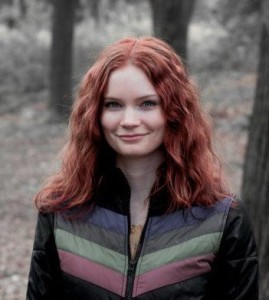In the office at my new apartment there are built-in bookshelves (they’re not built into the wall in the fancy sense of being permanently embedded there – there are shelves that we didn’t put up ourselves, is what I mean) that hold all of my middle grade and YA fiction with room left over for assorted sheet music, electronics, and (on the top shelf of the five) anything we want out of sight that we don’t have storage space for elsewhere. The shelves span the width of the room and – stacked two rows deep – my books take up two of them (my adult fiction and nonfiction are on a different shelf in the living room). I have them arranged according to a system that states:
- Series books (Babysitters Club, Sleepover Friends, The Gymnasts, Silver Blades, and dozens of lesser-knowns that ran for only 5-10 titles) form the back lines, not because we’re embarrassed by them (we have no shame) but because when books are numbered, they’re easier to find, even when they’re behind other books.
- The rest of the books are organized loosely by topic but mostly by free association: here are books about performing arts prodigies! Here are escape stories! Funny yet poignant goes here, adjacent to all-funny-all-the-time. Witches and aliens to the right, realistic young ladies to the left.
- Nothing is on the top shelf because I couldn’t reach it even standing on a cushioned piano bench that threatened to topple if I didn’t distribute my weight evenly enough.
For my first reread (in years, really – I know I reread Where the Red Fern Grows in the past five years, and I read The Mozart Season regularly, but other than that…) I went with a campus novel. Like The Wonder Years, it was written in the 80s but set in the early 60s. I still have to remind myself that the title isn’t actually Don’t Tell Me Lovers are Losers. I remembered the key plot points before I started, but what I was mostly after was the feeling it gave me when I originally read it. It’s a hazy thing, but when I reread a book from that long ago in my own history, I’m taken back in my mind’s eye to the same images my brain conjured when I first read the book. And as such, I’m taken back to where and when I was then. Not in the particulars – I wouldn’t claim to remember, for the vast majority of books, where I was sitting when I read it or what year it was (though there are a few like that) – but in the sense I have of the world. (Yes, it occurs to me that this may just be tremendously narcissistic). Reading was the backdrop to everything I did while growing up. After orthodontist appointments, I was allowed to buy six paperback books from the local bookstore (these averaged $2.50-$3.50 (new!)). My parents eventually banned books at the dinner table.
Back to Tell Me if the Lovers are Losers: the title is very curious to me. I think I may have avoided it when I was a pre-teen because it sounded like it would be salacious, and I was at the time essentially a Victorian figure prone to vapors who ran at the very thought. But it’s not about romantic love, per se – just attachment (and the men who appear are exclusively brothers and fathers – there aren’t even any male professors). The back copy is very melodramatic – “Hovering on the brink of womanhood” – but the writing skims over the top of cliches without succumbing (I mean – Cynthia Voight surely did not write the back copy). The three main characters are not tropes – if they were, the narrator (Ann), the proper, preppy one from a “traditional” background would likely also have perfect grades and be “the smart one.”
After finishing this I read Clare Beams’s The Illness Lesson. I think I’ll alternate between adult books and journeys into the past as we take shaky steps into fall, election season, and the remainder of quarantine. Next up: Gone Away Lake.




